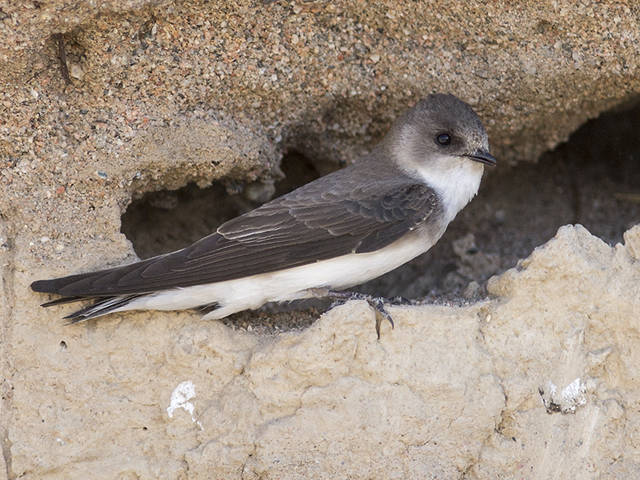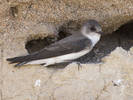search
classification
|
basic information
|
video
|
reports |
Pale Sand Martin
Riparia diluta (Sharpe et Wyatt, 1893)

|

|
|
|
2017-06-06
Kochkor, Naryn region |
© Sergey Toropov
|
|
Description
The Pale Sand Martin and Common Sand Martin have long been treated as conspecific. The Pale Sand Martin is smaller and slimmer than Common Sand Martin and has a shallower tail-fork. The upperparts are paler and more greyish-brown than in Common Sand Martin, the breast-band is paler as well and more grey–brown. The breast band is usually not only paler, but also less clear-cut than in Common Sand Martin and therefore less contrasting with an especially diffuse lower border. In some birds, the breast-band is complete in the middle, in others however, the middle of the breast is only slightly darker than the rest of the underparts and gives the impression of a broken breast-band with the paler centre merging in the darker sides. The head is also clearly paler than in Common Sand Martin, with especially the crown and ear-coverts being much paler and contrasting with the dark eye and the darker lores. This contrast is much less pronounced in Common Sand Martin. There is only a diffuse border between the ear-coverts and the paler throat. In Common Sand Martin, the ear-coverts are much darker with a clear-cut border and a strong contrast with the pale (often almost pure white, sometimes buffish) throat.
Biology
The Pale Sand Martin is common, in places abundant, breeding migrant. Inhabits clay or sand banks by rivers, lakes and ponds. During migration it occurs in deserts as well as in reed beds, where large numbers congregate in communal roosts with Barn Swallows. Appears early to mid of April in small flocks of 20-50 birds, settling to breed in colonies of several dozen pairs, often together with Eurasian Sand Martin. Both partners excavate nest hole and lined chamber with dry grass and feathers. Clutches of 3-5 eggs are laid in late May to mid of June. Both parents feed juveniles, who fledge in end June to mid July. Autumn migration begins in mid August. Pale Sand Martin migrate mostly in September in mixed flocks with Eurasian Sand Martin and Barn Swallow. Last birds recorded in early October.
References
Manuel Schweizer & Raffael Aye " Identification of the Pale Sand Martin Riparia diluta in Central Asia". Alula 4-2007.
Gavrilov E. I., Gavrilov A. E. "The Birds of Kazakhstan". Almaty, 2005.
Э.И.Гаврилов. "Фауна и распространение птиц Казахстана". Алматы, 1999.







